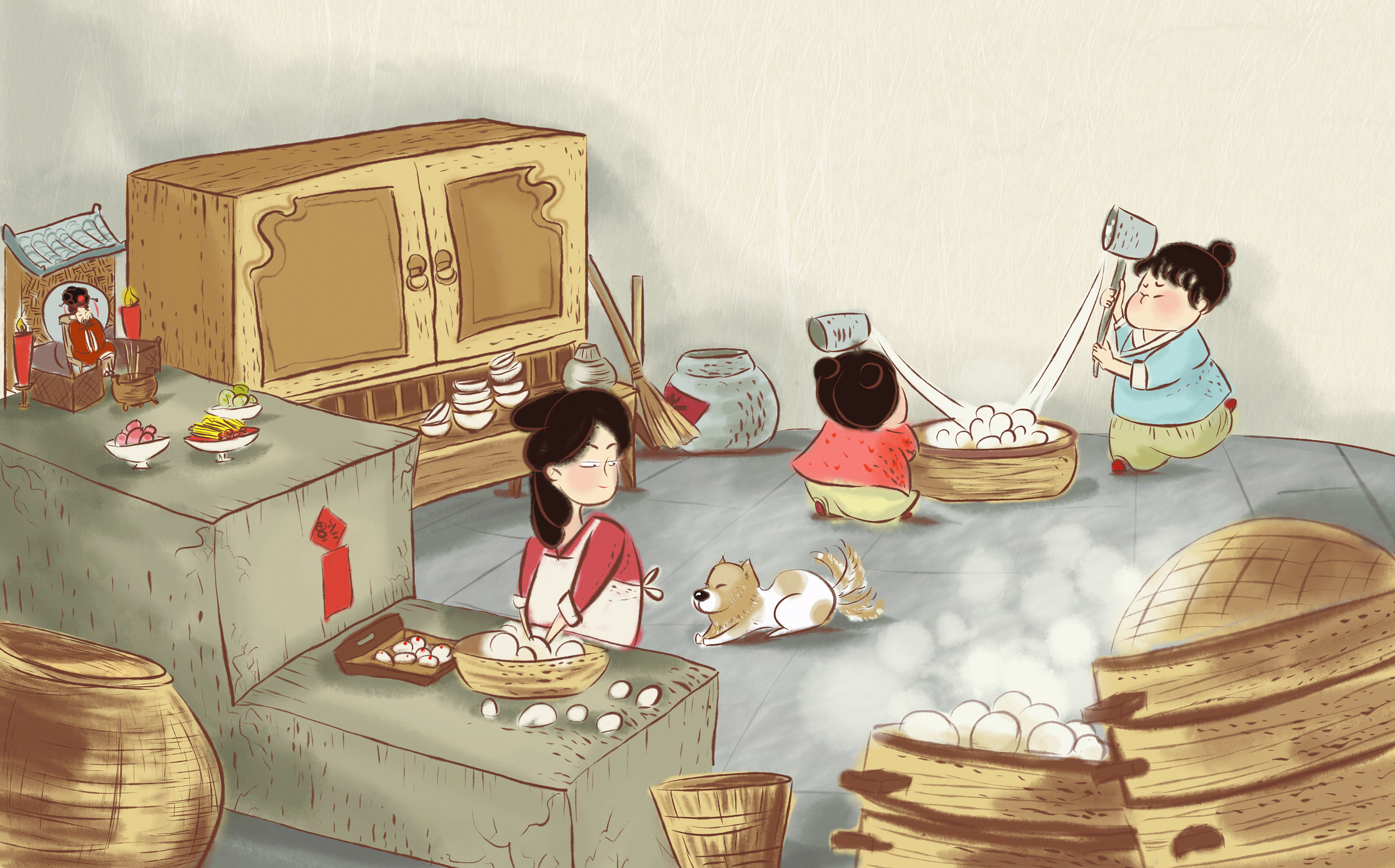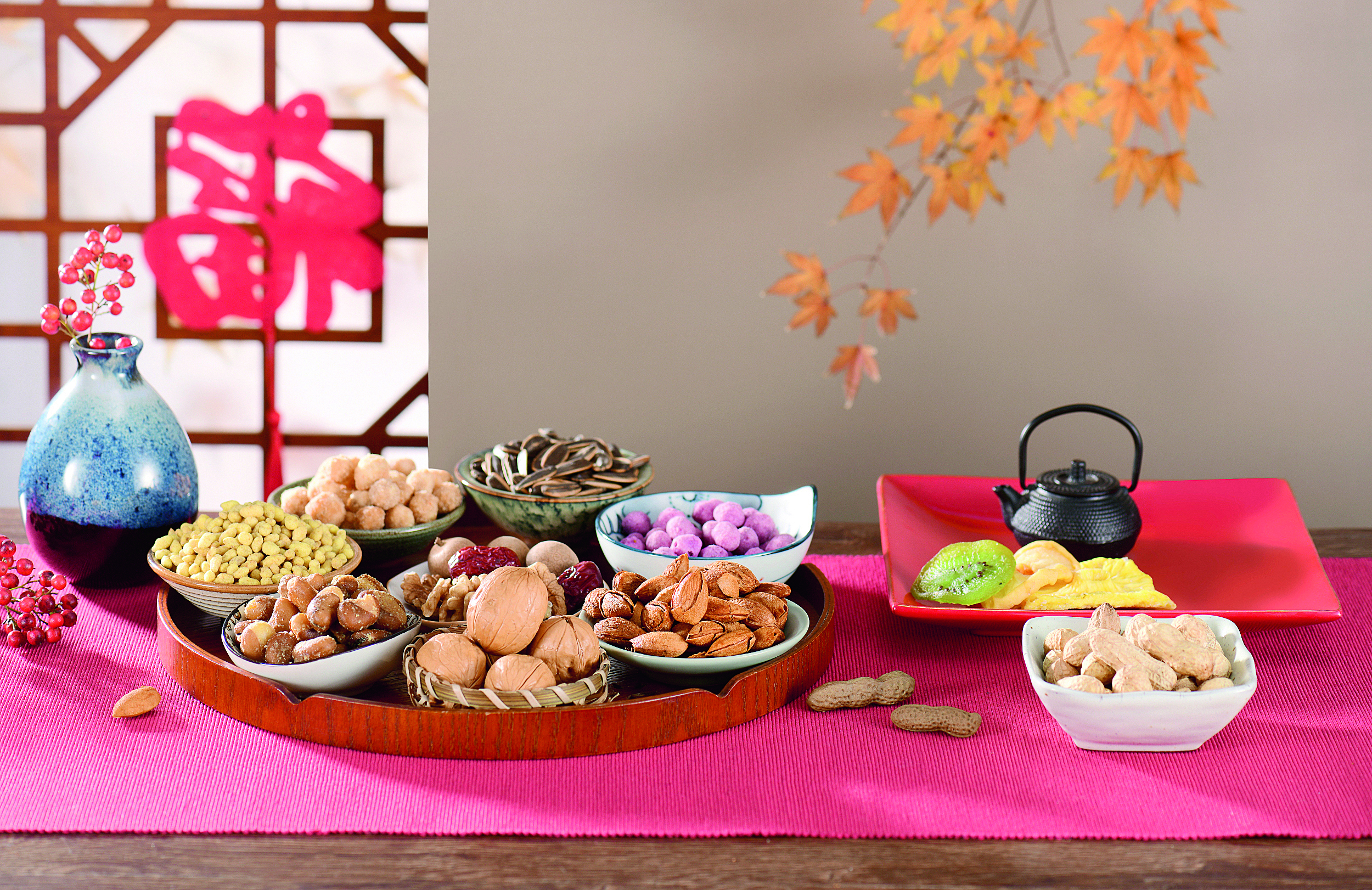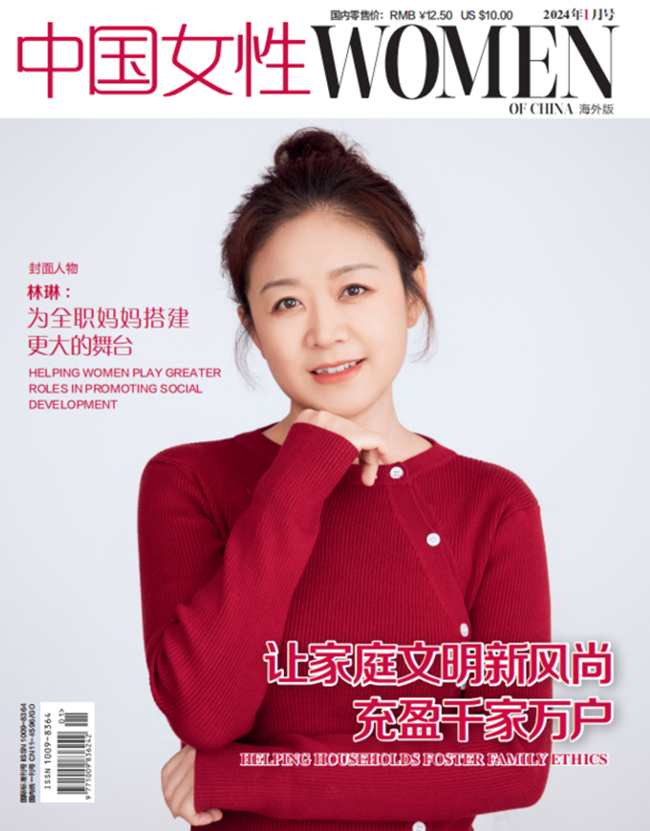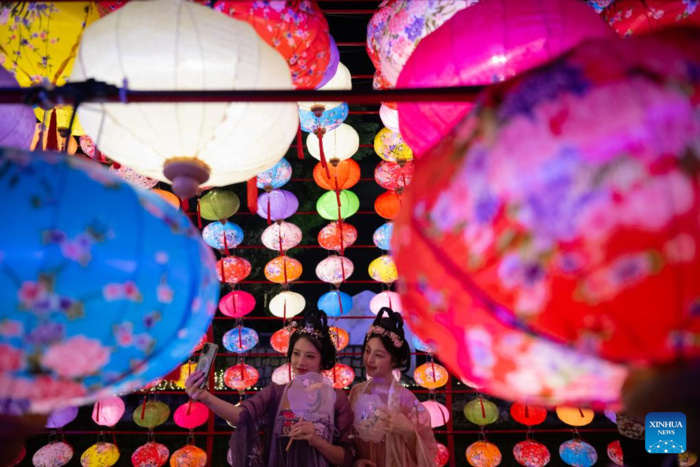Chinese Celebrate Spring Festival

Spring Festival, which falls on the first day of the first lunar month, is also known as Chinese New Year. For Chinese, it is as important as Christmas is to Westerners. Through Spring Festival delicacies, crafts and customs, one may get a glimpse into the unique charm of traditional Chinese culture. The items — and ceremonial activities — also reveal Chinese people's desire to live better lives, and to achieve harmony between heaven, earth and man. In 2006, China added Spring Festival to the list of the country's items of intangible cultural heritage. As China is becoming increasingly prosperous, Spring Festival is attracting greater attention throughout the world.
Traditional Decorations Create Festive Atmosphere
To usher in the Spring Festival (on February 1 this year), many Chinese hang Spring Festival couplets which contain black characters on red paper — on their walls and/or doors or gateposts. It is widely believed the couplets will bring good fortune, ward off evil spirits and prevent calamities.

The custom of pasting couplets on boards originated during the Song Dynasty (960-1279). As Zhu Yuanzhang, the first emperor of the Ming Dynasty (1368-1644), encouraged his officials to write couplets, the custom of pasting couplets on gateposts or door panels became popular. During the Qing Dynasty (1616-1911), Spring Festival couplets were formally recognized as an art form.

The couplets, with their concise, matching words, convey New Year's blessings for happiness and good luck. Different families may choose different wording, (such as "a house filled with gold and jade," "peace all year round," and "being promoted to higher positions successively)," for their couplets.
People in many regions of China, especially in North China, like to paste paper-cuts (mostly red) on their windows around Spring Festival. Why? They want to add to the festive atmosphere. The art form dates back more than 1,000 years. Paper-cuts are characterized by vivid images, but depicted in an exaggerated way.
The paper-cuts generally have auspicious patterns, such as shoutao (peach-shaped cakes eaten on one's birthday), a dragon and a phoenix, abundant harvest of all food crops, and scenes depicted in operas and stories. The Chinese zodiac (the 12 animals, which represent the 12 Earthly Branches, to symbolize the years in which people are born) is also a common pattern.
A door god is a Chinese decoration placed on each side of an entry to a temple or home. It is widely believed a door god can keep evil spirits from entering the building. Around Spring Festival, many Chinese families, especially rural families, post paintings — with images of Zhong Kui (the god who drives away evil spirits), well-known ancient military officials Qin Qiong and Yue Fei, and the Taoist Immortals of Happiness, High Rank and Longevity (which are considered to be the three major blessings of life) — on their front doors.
New Year Foods Mirror Times
As Spring Festival is looming around the corner, many Chinese have begun making special purchases (for the festival), including foods, house decorations and presents (for their friends and relatives). But what is the holiday season really about? Tradition, presents or food? Yes, yes and yes. However, the most important thing is intangible — turning moments with those you love into treasured memories, which will last a lifetime.

Wang Lian, a white-collared employee with a foreign enterprise in Shanghai, misses the "good old days," dozens of years ago, when her family lived in an ancestral house. "Every year, around Chinese New Year, we held various activities (including cleaning the house and offering sacrifices to our gods and ancestors) in our old house ... My heart is filled with delight every time I look back on the precious moments when my family prepared the New Year's foods in the house," recalls Wang.
"We would eat during the family reunion dinner on New Year's Eve. Most people believed the day before New Year's Eve was the beginning of the new year. On that day, we made rice-cake soup, with broth and sliced oilseed rape. On New Year's Eve, my father would cook the family reunion dinner. He prepared one soup, one dessert, eight cold dishes and eight hot dishes."

In keeping with Chinese customs, people return home for a reunion dinner with their relatives on Chinese New Year's Eve. The dinner tends to mirror the times. One can better understand the tremendous changes that have taken place in Chinese society during the past several decades simply by studying the development of the "sumptuous meal."
Liu Jingxian, one of China's top chefs in Shenyang (capital of Northeast China's Liaoning Province), takes delight in talking about the New Year's foods. During a recent chat with Xiao Ling, a 20-something woman from Beijing, Liu recalled the changes in the way residents (of Shenyang) have had their "big meals" during Spring Festival during the past several decades."
Due to the shortage of food in the 1960s and 1970s, most of Shenyang's residents, like many people in other regions of the country, looked forward to Spring Festival, because they could eat to their hearts' content. Many of Shenyang's residents bought fatty meats, to extract oil, which they used to stew pickled cabbage. The cabbage, stewed with two or three pieces of fat meat, was the favorite food of many residents. At that time, average Chinese families could barely afford to eat dinner in a restaurant," Liu said.

"As China experienced rapid economic development during the 1980s, people's living standards improved substantially. As a result, most families in Shenyang were able to drink beer and eat several meat dishes on Chinese New Year's Eve. After the dinner, many families enjoyed eating candies and/or cookies while they watched CCTV (China Central Television)'s Spring Festival gala.
"Back then, only the lucky few families could afford to enjoy'a sumptuous meal' at a restaurant on the'big day.' Braised pork balls in gravy and several other meat dishes were the most popular dishes served in restaurants."
Liu is pleased to note, given China's rapid economic and social development, especially during the 21st century, residents have been paying greater attention to the quality of their lives. Meat dishes are no longer the "major roles" during residents' family reunion dinners, as the residents can have them, together with various types of seafood and vegetables, any time they want. As the residents are better off, many families enjoy a sumptuous dinner at a restaurant on Chinese New Year's Eve.
"During the past few years, Western-style foods have become favorites of many residents, especially young people like you," Liu told Xiao. "I have witnessed the tremendous historical and social changes (in China) during the past dozens of years. Despite the passage of time, the family reunion dinner, which embodies Chinese people's profound love for our families, still appeals to us."
Photos Supplied by VCG
(Women of China English Monthly January 2022 issue)
Please understand that womenofchina.cn,a non-profit, information-communication website, cannot reach every writer before using articles and images. For copyright issues, please contact us by emailing: website@womenofchina.cn. The articles published and opinions expressed on this website represent the opinions of writers and are not necessarily shared by womenofchina.cn.






.jpg)

 WeChat
WeChat Weibo
Weibo 京公网安备 11010102004314号
京公网安备 11010102004314号